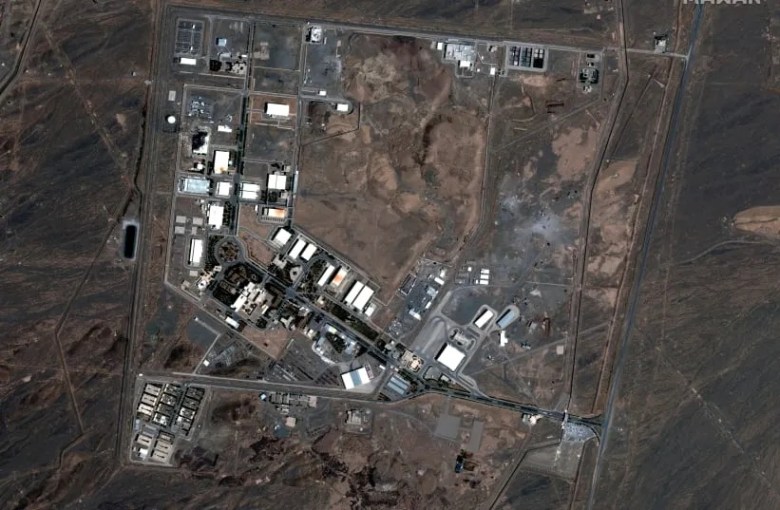Israel’s air force, possibly with drones, attacked an air base or hit nearby facilities in Isfahan, Iran.
The airbase has not been officially named, but it was likely the Hesa Air Base. This air base is associated with the Iran Aircraft Manufacturing Company, the successor to the Bell Helicopter complex built for the Shah of Iran and dating back to 1974. That facility is massive and is in full operation producing Bell’s 214 Helicopter and other models as well as locally produced variants.

The airbase also plays a role in protecting the nearby Natanz Uranium Enrichment facility and three Chinese-origin nuclear reactors.
There is information coming from the Jerusalem Post that says that Israel targeted an air defense site protecting the Natanz facility, shown in an aerial view below. Given the importance of uranium enrichment to Iran’s weapon’s program, this site probably was protected by a Russian-made S-300 air defense system. We don’t know if the site was destroyed.

In addition, Jennifer Dyer who is a top geostrategic analyst, reports that Israel may also have hit a high level Hezbollah meeting in Baghdad and a missile factory in the Babil, Iraq governance. She also reports that the strike in Syria may have been aimed at a missile production facility.
In addition, Israel carried out counter-terrorist operations in Lebanon and in the West Bank.
According to reports, Iran shut down its nuclear facilities and other airports, including the large international airport in the Iranian capital, Teheran. However, a few hours after the strike the shutdown orders were rescinded and regular civilian air traffic restarted.
There are no reports of any casualties from the Israeli strike.
The US said it was informed there would be a strike by Israel four days earlier, but apparently the target of the attacks was not provided to the Pentagon.
Israeli aircraft could not operate in the region without coordinating in some measure with the United States. Even so, the Pentagon made it clear it had nothing to do with the attack. The US offered no immediate condemnation of the strike.
In a coordinated measure, Israel also knocked out two Syrian military radar sites which some say may have been coordinating track data with the Iranians. This may not be why those radars were hit. Normally, Israel informs Russia about operations in Syrian airspace under a deconfliction agreement that is in place. Whether Russia was informed is not known in this case.
The Iranians attempted to down Israel’s aircraft and drones with their air defense systems, principally the S-300. So far as is known, Iran’s air defenses were ineffective.
The early Iranian reaction was to discount the attack and suggest the explosions may have been caused locally and not by Israeli aircraft. Iran let it be known it had no intention of taking any further military action against Israel.
It may be that Israel, along with trying to ward off heavy internal pressure for an answer to Iran’s massive blitz on Israel, was sending a message to the Iranians on just how vulnerable Iran is to Israel’s air force. In addition, Israel may have been testing to see whether Iran’s continued and public threats to hit Israel again were real threats – or just bluster.
Stephen Bryen served as staff director of the Near East Subcommittee of the Senate Foreign Relations Committee and as a deputy undersecretary of defense for policy.
This article was first published on his Weapons and Strategy Substack and is republished with permission.






